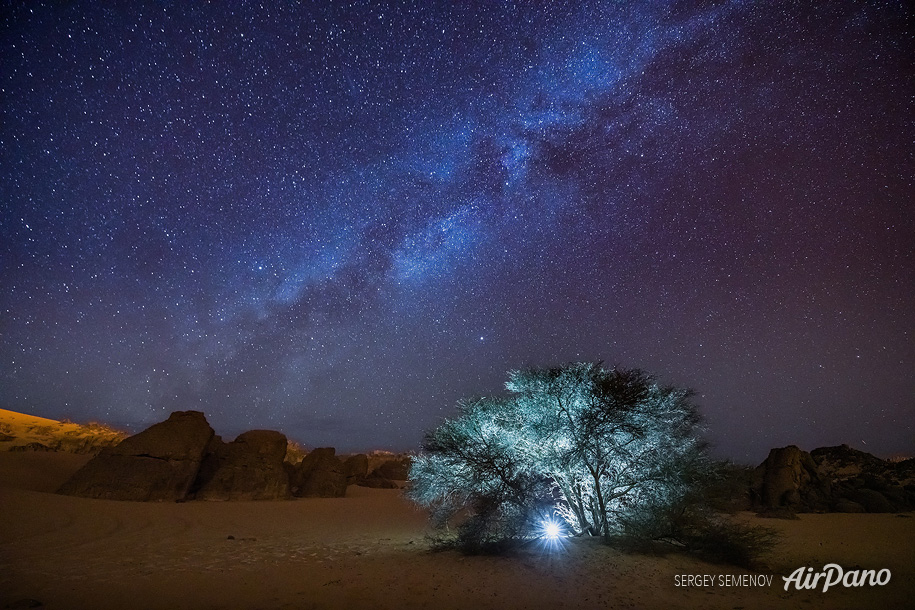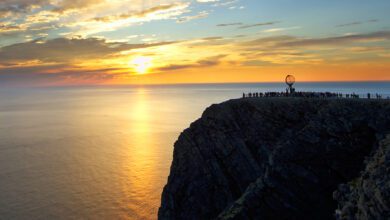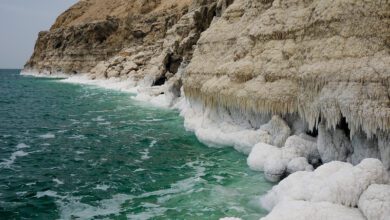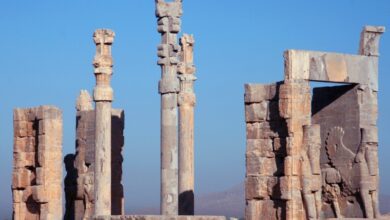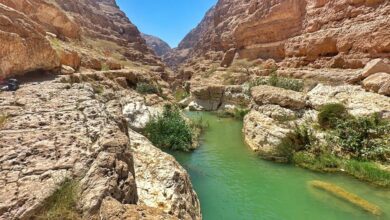
Imagine yourself in the heart of the Sahara, with nothing but endless stretches of golden sands and a sky full of shimmering stars above you. Now, picture yourself surrounded by charming desert villages, ancient ruins, and the warm hospitality of the Algerian people. This is exactly what awaits you in Algeria, a hidden gem of North Africa. In this article, we will take you on a journey through the enchanting landscapes and rich culture of this desert paradise, revealing why it is a dream destination for desert lovers everywhere. Get ready to be captivated by the “Starry Nights in the Sahara: A Desert Lover’s Dream in Algeria.”
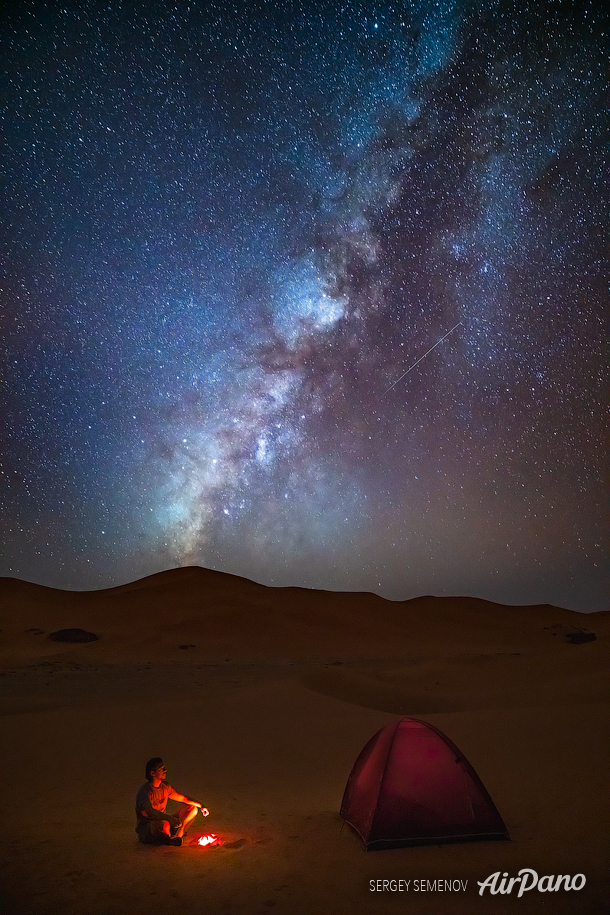
The Beauty of the Sahara Desert
The mesmerizing landscape
When you think of vast, breathtaking landscapes, the Sahara Desert immediately comes to mind. Covering a staggering area of over 9 million square kilometers, the Sahara is the largest hot desert in the world. Its beauty lies in its seemingly endless stretches of golden sand dunes, which create a truly mesmerizing sight. The undulating shapes and patterns of the dunes give the desert a unique and otherworldly ambiance that will leave you in awe.
Unique flora and fauna
Contrary to the common belief that deserts are desolate and barren, the Sahara hosts a surprising variety of flora and fauna. In certain areas, you can witness the stunning sight of oasis towns nestled amidst the vast expanse of sand. These green patches, with their lush vegetation and date palm groves, are a stark contrast to the surrounding desert. You might also catch a glimpse of some elusive wildlife during your journey, such as the iconic dromedary camels, fennec foxes, and Saharan cheetahs.
A paradise for stargazers
One of the most enchanting aspects of the Sahara Desert is its nighttime beauty. With its clear skies and minimal light pollution, the desert becomes a haven for stargazers. As the sun sets and the sky darkens, a celestial spectacle unfolds. Countless stars twinkle against the dark canvas, creating a captivating panorama of constellations. If you are lucky, you might even witness a shooting star streaking across the sky, making your experience in the Sahara truly unforgettable.
Exploring the Sahara
Popular tourist destinations
The Sahara offers a myriad of destinations for tourists, each with its own unique charm. One such destination is the Tassili n’Ajjer National Park in Algeria. This UNESCO World Heritage Site is famous for its ancient rock art masterpieces, which depict the rich history and cultural heritage of the region. Another must-visit location is the Erg Chebbi, a vast sea of towering sand dunes located near Merzouga in Morocco. Here, you can experience the thrill of dune bashing or simply enjoy the serenity of the desert landscape.
Traveling by camel
Immerse yourself in the true desert experience by embarking on a camel trek. Riding a camel allows you to traverse the vast dunes at a leisurely pace, taking in the breathtaking scenery as you go. You can opt for a short camel ride or embark on a multi-day desert excursion, camping under the starry skies. The rhythmic sway of the camel’s stride and the feeling of being one with the desert will make your journey an unforgettable adventure.
Dangers and precautions
While exploring the Sahara is an incredible experience, it is essential to be aware of the potential dangers and take precautions. The desert can be an unforgiving environment, with extreme temperatures and limited resources. It is crucial to carry enough water, food, and necessary provisions to stay hydrated and nourished. Additionally, it is advisable to travel with a knowledgeable guide who can navigate the vast expanse of the desert and ensure your safety.
Cultural Encounters
The Tuareg people
One of the most fascinating aspects of visiting the Sahara is encountering the Tuareg people, also known as the “blue people” due to the indigo color of their traditional clothing. The Tuareg are nomadic pastoralists who have inhabited the Sahara for centuries. They have a rich cultural heritage and are known for their intricate silver jewelry, elaborately embroidered clothing, and distinct music and dance traditions. Interacting with the Tuareg offers a glimpse into their ancient way of life and the resilience of desert-dwelling communities.
Traditional music and dance
Music and dance hold a special place in Tuareg culture, and experiencing their traditional performances is a must on any Sahara journey. The Tuareg music, characterized by mesmerizing melodies and soulful vocals, transports you to another time and place. Their dances, often accompanied by rhythmic beats of drums and clapping, showcase the grace and elegance of the Tuareg people. Don’t be surprised if you find yourself swaying along to the enchanting rhythm of their music.
Hospitality in the desert
Hospitality is deeply ingrained in desert culture, and the Sahara is no exception. The Tuareg people are renowned for their warm and generous nature, welcoming travelers with open arms. You can experience their hospitality by staying in traditional desert camps, where you will be treated to traditional meals, storytelling sessions, and even opportunities to learn about their traditional crafts. The genuine kindness and warmth of the Tuareg people will make you feel at home in the vastness of the desert.
Traditional Desert Activities
Sandboarding and sledding
If you are seeking adventure in the Sahara, sandboarding and sledding are a must-try. Imagine sliding down towering sand dunes at high speeds, feeling the rush of adrenaline as you ride the sands. Sandboarding allows you to unleash your inner daredevil and create unforgettable memories. Whether you opt for standing sandboarding or the classic sitting sledding, these activities are guaranteed to give you an exhilarating experience in the heart of the desert.
Trekking and hiking
For those who prefer a more leisurely exploration of the Sahara, trekking and hiking offer the perfect opportunity to immerse yourself in the desert’s stunning landscapes. Guided hikes can take you to hidden gems, such as secluded oasis villages or ancient caravan routes. With each step, you will discover the ever-changing terrain of the desert, from rolling sand dunes to rugged mountains. Trekking and hiking in the Sahara provide a unique sense of tranquility and connection with nature.
Visiting ancient sites
The Sahara Desert is steeped in history, and visiting its ancient sites is like stepping back in time. One such site is the UNESCO World Heritage-listed town of Ghadames in Libya, renowned for its well-preserved mud-brick architecture and labyrinthine streets. Another iconic destination is the ancient city of Timbuktu in Mali, a center of Islamic learning and a hub for trade and commerce during medieval times. Exploring these ancient sites allows you to appreciate the rich cultural heritage and historical significance of the Sahara.
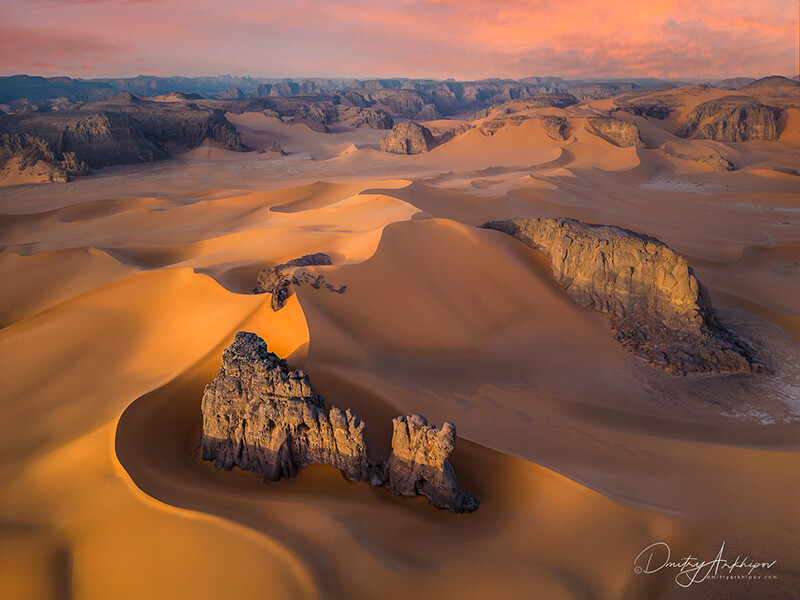
Unique Accommodation Options
Luxury desert camps
For those seeking a touch of luxury in the midst of the desert, luxury desert camps provide the perfect accommodation option. These camps offer lavish tents adorned with luxurious furnishings and amenities, providing a comfortable experience in the rugged desert landscape. Waking up to the sunrise over the dunes, enjoying gourmet meals, and relaxing in sumptuous surroundings will make your Sahara adventure even more memorable.
Eco-friendly accommodations
If you are passionate about sustainable travel, eco-friendly accommodations in the Sahara are the way to go. These accommodations prioritize minimal environmental impact while providing a unique desert experience. From solar-powered camps to eco-lodges built with sustainable materials, you can contribute to the preservation of the fragile ecosystem while enjoying the beauty of the desert. These accommodations often offer educational programs on sustainable practices, further enhancing your understanding and appreciation of the Sahara’s ecosystem.
Overnight stays with nomadic tribes
For a truly immersive cultural experience, consider spending a night with nomadic tribes. These tribes, such as the Tuareg, lead a nomadic lifestyle, moving across the desert in search of pasture and water for their herds. Staying with them allows you to experience their simple yet fulfilling way of life. You can participate in daily chores, learn about their ancient customs, and share stories around a campfire under the starlit sky. The connection forged with these nomadic tribes will be an unforgettable highlight of your Sahara expedition.
Culinary Delights in the Sahara
Traditional Algerian cuisine
Algerian cuisine showcases the diverse flavors and influences of the Sahara region. From savory couscous dishes to fragrant tajines, Algerian cuisine is a delight for your taste buds. Traditional dishes often feature ingredients such as lamb, chicken, vegetables, and aromatic spices such as saffron and cumin. Indulge in mouthwatering Harira, a hearty soup made with lentils, chickpeas, and aromatic herbs, or savor the flavors of Mechoui, succulent roasted lamb cooked in a traditional underground oven. Algerian cuisine is a true culinary adventure in the heart of the Sahara.
Exquisite tea rituals
Tea holds a special place in desert culture, and experiencing the Sahara’s exquisite tea rituals is a must. Tea ceremonies are often seen as a symbol of hospitality and friendship among the desert-dwelling communities. The traditional preparation involves meticulously boiling tea leaves with fresh mint leaves and serving the tea in small, ornate glasses. The tea is poured from a height, creating a frothy layer, before being poured into the glasses. The fragrant aroma and rich flavors of the tea will leave you craving for more.
Delectable date-based dishes
Dates are a staple in Saharan cuisine, and the desert offers a wide array of delectable date-based dishes. From sweet date pastries to savory tagines with dates, these dishes showcase the versatility and richness of this humble fruit. Indulge in Maakouda, a delicious date-stuffed pastry, or savor the flavors of Chicken Tagine with Dates, a dish that balances the sweetness of dates with savory spices. Exploring the culinary delights of the Sahara will introduce you to a world of flavors that will tantalize your taste buds.
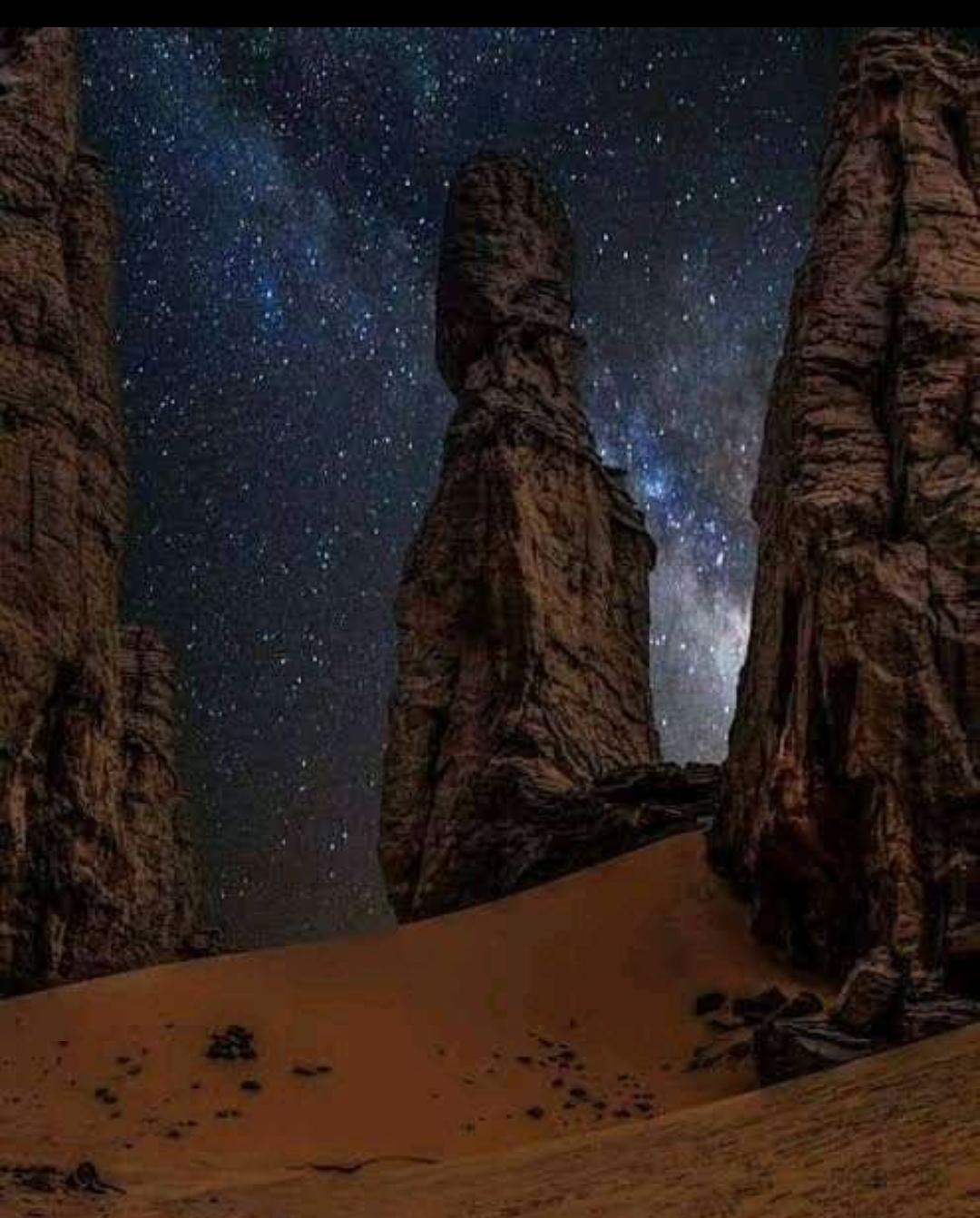
Weather and Best Time to Visit
Extreme temperatures and climate
The Sahara Desert is famous for its scorching temperatures during the day and chilly nights. The summer months, from June to August, experience extreme heat with temperatures soaring above 40 degrees Celsius (104 degrees Fahrenheit). Conversely, winter months, from December to February, can be surprisingly cold, with temperatures dropping below freezing at night. It is essential to pack accordingly, with lightweight and breathable clothing for the day and warm layers for the night.
Choosing the optimal months
To make the most of your Sahara experience, it is advisable to visit during the shoulder seasons of spring (March to May) and autumn (September to November). During these months, temperatures are more moderate, allowing for comfortable exploration of the desert. The spring months bring the blooming of desert flowers, while autumn showcases the mesmerizing play of colors as the sun sets over the dunes. These seasons offer a perfect balance between warm weather and pleasant temperatures.
Avoiding sandstorms and rainy seasons
Sandstorms and rainy seasons can disrupt your Sahara adventure, so it is crucial to plan your visit accordingly. Sandstorms are more common during the transitional periods between seasons, so avoiding visits during these times can minimize the risk. Additionally, while the Sahara generally receives minimal rainfall, occasional showers can occur during the winter months. Checking weather forecasts and consulting with local experts will help you avoid potential weather-related inconveniences.
Safety and Precautions
Navigating the desert
The vastness of the Sahara can pose challenges in terms of navigation, making it essential to hire experienced guides. These guides are familiar with the intricate desert routes and can ensure safe and efficient travel. They can also provide valuable insights into the cultural and natural aspects of the desert, enriching your journey. Remember to stay close to your guide and follow their instructions to avoid getting lost or disoriented in the vast expanse of sand.
Dealing with extreme heat
The Sahara’s extreme heat can be a hazard, so it is crucial to take precautions to protect yourself. Dress in loose, breathable clothing that covers your skin to minimize sun exposure. Wear a wide-brimmed hat and sunglasses to shield yourself from the intense sun. Make sure to carry and regularly drink plenty of water to stay hydrated, especially during outdoor activities. Taking frequent breaks in shaded areas and avoiding exposure during the hottest part of the day will help you stay safe and comfortable.
Securing travel permits and guides
Before embarking on your Sahara adventure, ensure that you have obtained the necessary travel permits and enlisted the services of approved guides. The desert spans multiple countries, each with its own regulations, so it is essential to familiarize yourself with the specific requirements of your chosen destination. Securing the appropriate permits and traveling with licensed guides will not only ensure your safety but also contribute to the preservation of the fragile ecosystem and support local communities.
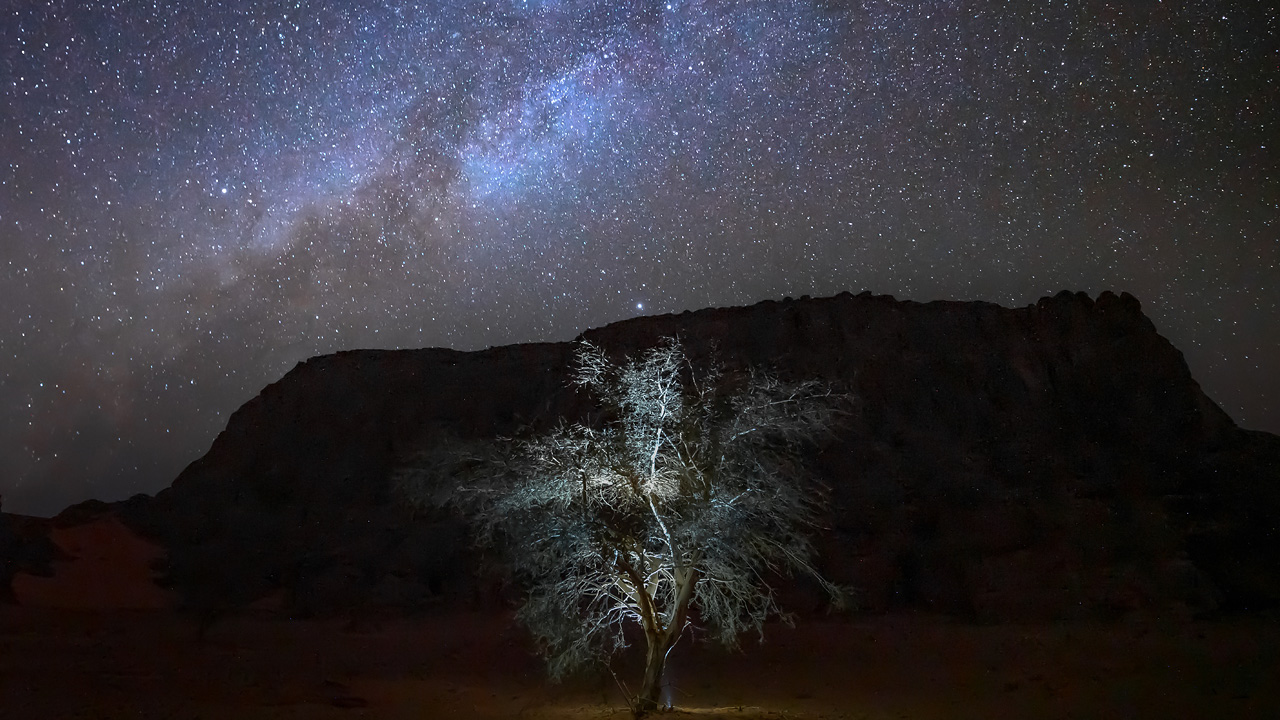
Must-Have Essentials
Proper clothing and sun protection
When packing for your Sahara trip, it is crucial to include proper clothing and sun protection essentials. Opt for lightweight, breathable fabrics such as linen or cotton that provide coverage from the sun without compromising comfort. Long-sleeved shirts, loose pants, and a wide-brimmed hat are essential to shield yourself from the harsh desert sun. Don’t forget to pack a good sunscreen with a high SPF rating and a pair of sunglasses to protect your skin and eyes from the intense UV rays.
Carrying enough water and food
The desert’s arid conditions make it essential to carry enough water and food to sustain yourself during your journey. Water is your most vital resource, so it is advisable to carry at least two liters per person per day. Hydration packs or water bottles with built-in filters can be useful for refilling water from natural sources if needed. Additionally, pack nutrient-rich snacks such as nuts, dried fruits, and energy bars to keep your energy levels up while on long treks or camel rides.
Navigation tools and communication devices
In the vastness of the Sahara, navigation tools and communication devices are crucial for a safe and enjoyable journey. GPS devices or compasses can help you navigate your way through the desert, ensuring you stay on track. It is also advisable to carry a fully charged cell phone with a local SIM card and a backup power bank to stay connected. While the remoteness of the desert may limit cell reception, having a means of communication can be invaluable in case of emergencies.
Preserving the Sahara’s Fragile Ecosystem
Promoting sustainable tourism practices
As visitors to the Sahara, it is our responsibility to promote sustainable tourism practices that minimize our impact on the delicate ecosystem. This includes respecting designated trails and protected areas, avoiding littering, and reducing water consumption. Opt for eco-friendly accommodations that prioritize responsible practices and contribute to local conservation efforts. By being conscious of our actions and making informed choices, we can ensure the preservation of the Sahara’s fragile ecosystem for future generations to enjoy.
Conservation efforts for endangered species
The Sahara is home to several endangered species, including the Saharan cheetah and the Barbary macaque. Supporting conservation efforts aimed at protecting these species is crucial for their survival. Many organizations and local communities are actively involved in initiatives focused on conservation and the restoration of habitats. You can contribute by learning about these efforts and supporting reputable organizations working towards the preservation of Saharan biodiversity.
Reducing environmental impact
To reduce your environmental impact in the Sahara, it is essential to practice the principles of Leave No Trace. This involves minimizing waste generation, properly disposing of trash, and avoiding unnecessary disturbance to the natural environment. Respect wildlife by observing from a distance and refraining from feeding or interfering with their habitats. By adopting these practices, we can ensure that future generations can continue to experience the beauty of the Sahara while preserving its fragile ecosystem.
